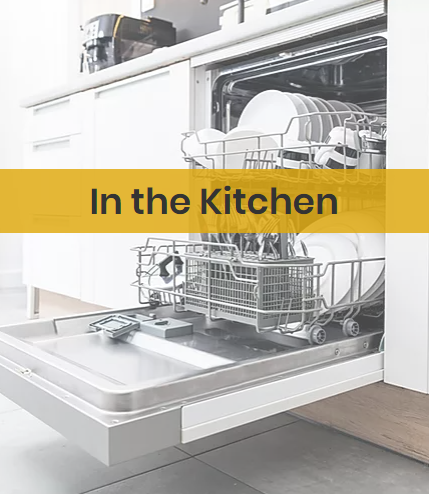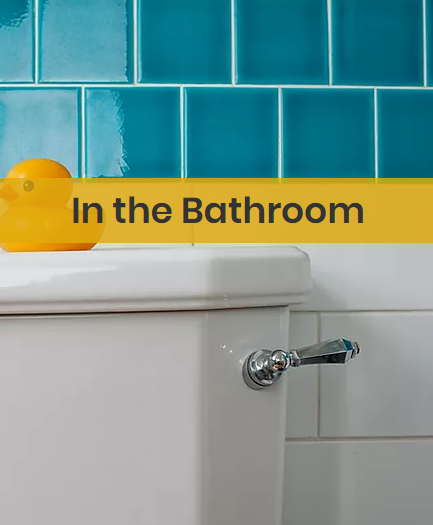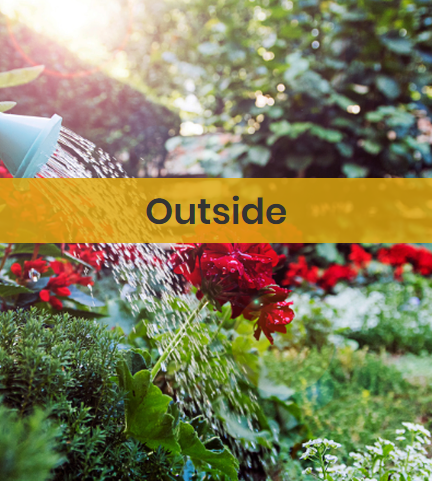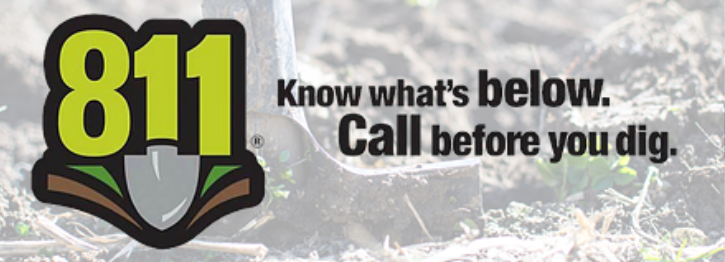Conservation Tips
Water Wise
Tips and Tricks to Save Water & Our Infrastructure

DON'T put produce stickers down the drain.
DON'T let the water run when washing dishes by hand. Instead, fill up the sink.
DON'T put fat, oil, grease, or grit (FOGG) down the drain. The following are common examples of FOGG:
- Butter
- Gravy
- Egg Shells
- Uncooked Rice
- Bacon Grease
- Coffee Grounds
DO repair dripping faucets. Dripping faucets can waste up to 2,000 gallons of water each year in the average home.
DO repair dripping faucets. Dripping faucets can waste up to 2,000 gallons of water each year in the average home.
DO scrape grease and food scraps from cooking surfaces into a container and put it in the trash or use in composting.
DO use baskets or strainers in the sink to catch food scraps and other solids. Empty what you catch into the trash or compost them.
DO invest in high-efficiency products when replacing old appliances to help conserve water.
DO fully load the dishwasher and clothes washer before running.
DO defrost frozen food in the refrigerator or in the microwave instead of running water over it.
DO install low flow faucets.
DO manage and dispose of waste properly.
DON'T flush the following (even if they say "flushable"):
- Wipes
- Baby Wipes
- Diapers
- Cleaning Wipes
- Paper Towels
- Rags and Towels
- Cotton Swabs and Cotton Balls
- Feminine Products
- Household Cleaners
- Unused Pharmaceuticals
- Paint, Used Motor Oil, Pesticides
- Aquarium Gravel or Kitty Litter
DON'T let leaks go unfixed. A small leak can indicate a bigger issue, and can lead to a hefty water bill. CLICK HERE to calculate how much water is wasted by a leaky faucet.
DON'T leave the sink running while you brush your teeth or while shaving.
DO invest in high-efficiency products such as low flow shower heads and toilets.
DO limit your time in the shower to help conserve water.
DO add a toilet bag or brick in your tank to help reduce water capacity in older toilets (not in low-flow toilets).
DO repair dripping faucets and leaky toilets.
Dripping faucets can waste up to 2,000 gallons of water each year in the average home. Leaky toilets can waste as much as 200 gallons per day.
DO limit install low-flow faucets and fixtures.


DON'T spray off your driveway or patio if you're looking to save water. Instead, sweep it off with a broom.
DO use a broom, rather than a hose, to clean sidewalks, patios, and driveways.
DO be conscious of the time of day you use your sprinkler system. Mid morning and late at night are optimal times.
DO select plants appropriate for the climate in Southwestern Idaho (low water-use native plants and minimize watering times).
DO group your plants based on their watering needs to avoid over or under watering.
DO place mulch around your plants to reduce evaporation.
DO cover your swimming pool if you have one. You will cut the loss of water due to evaporation by 90%.
Call Before You Dig

Don't pay for a costly mistake that can easily be prevented. Underground power, gas and water lines can cause significant injury and damage if struck. Before you start any type of construction or excavation projects on or near your home, call 811 to identify all underground utilities.
This single call will connect you to Idaho's one call underground notification center which in turn will notify all of the utility providers in your area. Upon receiving notice, they will then mark their facilities around your property within 48 hours at no cost to you. You can also submit an online locate request at www.digline.com
APWA Uniform Color Codes
DO you ever wonder what those colored lines on the ground actually mean?
Electric Power Lines, Cables, Conduit and Lighting Cables
Communications, Alarm or Signal Lines, Cables or Conduit, Traffic Loops
Gas, Oil, Steam, Petroleum, Gaseous Materials
Potable Water
Reclaimed Water, Irrigation, Slurry Lines
Sewers and Drain Lines
Outlining Dig Site
Temporary Survey Marks









